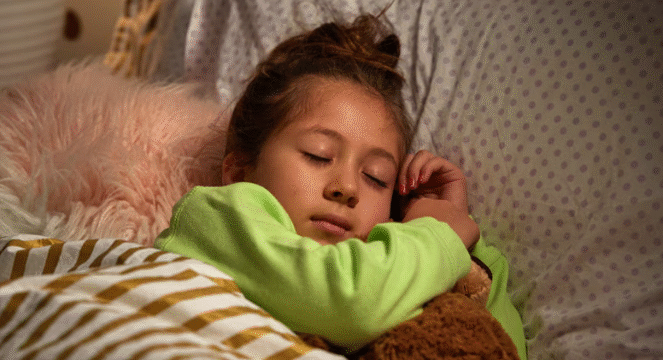Packing a school lunch each morning can sometimes feel like a balancing act. Parents want meals that are quick to prepare, affordable, and most importantly, nutritious enough to keep children energized throughout the day. Kids, on the other hand, often look for fun, tasty options that feel exciting to open when lunchtime arrives. Finding common ground does not have to be complicated. With a few smart swaps, you can transform a lunchbox into something both wholesome and appealing. These changes are simple to make and can become part of your routine without adding stress to your mornings.
One of the easiest ways to upgrade a school lunch is to rethink the type of bread used in sandwiches. White bread may be soft and familiar, but it often lacks fiber and long-lasting energy. Replacing it with whole grain bread, a whole wheat wrap, or even a pita pocket adds nutrients while still providing a familiar base for favorite fillings. Children usually adapt well to this change, especially when the sandwich is filled with something they already enjoy, such as turkey and cheese, or peanut butter with sliced banana.
Another practical switch is choosing healthier spreads. Many spreads and condiments contain added sugars or unnecessary fat, which can weigh a meal down. Instead of sugary jams, try naturally sweet fruit spreads without added sugar or even mashed berries for a fresh twist. Replacing mayonnaise with hummus, avocado, or Greek yogurt adds creaminess while sneaking in extra vitamins and protein. These swaps taste delicious and help create a lunch that feels more like fuel than just filler.
Drinks are another area where small adjustments make a big difference. Juice boxes are convenient, but they are often loaded with sugar, even when labeled as natural or organic. Switching to water or flavored water with slices of fruit can keep kids hydrated without the sugar crash. If your child misses the flavor of juice, consider diluting it with water until they become accustomed to the lighter taste. This small change supports healthy habits that can benefit them well beyond the lunchroom.
When it comes to snacks, packaged chips and cookies may be easy to grab, but they usually offer little more than empty calories. A healthier swap could be air-popped popcorn, whole grain crackers with cheese, or roasted chickpeas for a crunchy alternative. For something sweet, fresh fruit is always a winner. If your child likes the idea of dessert, try packing apple slices with a small portion of nut butter or a homemade energy bite made from oats and dried fruit. These options satisfy cravings without going overboard on sugar.
Even side dishes can benefit from thoughtful swaps. Instead of packing instant noodles or processed pasta salads, try whole wheat pasta with vegetables or brown rice mixed with beans. These choices provide fiber and lasting energy, keeping children focused through their afternoon lessons. If your child enjoys dips, pack cut-up vegetables with hummus, salsa, or a yogurt-based ranch. This simple change makes vegetables more appealing and turns them into a fun finger food.
Cheese sticks, yogurt cups, and granola bars are common lunchbox items, but they can vary widely in quality. Some yogurts and bars contain as much sugar as candy. A better option is plain or lightly sweetened yogurt with added fruit or a homemade parfait in a small container. For granola bars, look for those with whole grains and minimal added sugar, or consider making a batch at home so you know exactly what is inside. Pairing these with a piece of fruit makes a lunch feel complete and satisfying.
Portion size is also something to keep in mind when making swaps. Children do not always need large servings, but they do benefit from variety. Instead of one big sandwich, try smaller items such as mini wraps, fruit skewers, or muffin-tin egg bites. These are easy to hold, fun to eat, and make it simple to introduce new foods in a non-intimidating way. Offering a mix of textures and colors not only makes the meal more attractive but also increases the chances that children will eat more of what you pack.
One of the best strategies for making swaps work is involving kids in the process. Let them choose between two healthy options, such as grapes or orange slices, or whole grain crackers or popcorn. When children have a say in what goes into their lunchbox, they are more likely to enjoy it. This also teaches them the importance of making thoughtful food choices. Over time, these small lessons build habits that will serve them well as they grow.
Preparing ahead can make swaps easier to maintain. Washing and chopping fruits and vegetables in advance, portioning out snacks, and pre-cooking grains or proteins saves time during busy mornings. Some parents like to pack lunches the night before to avoid the rush, while others prefer to set aside a weekend prep session. Whichever method works best, a little organization goes a long way in making sure healthy swaps are consistently part of the routine.
Of course, balance is important. It is not about removing every treat or banning favorite foods. Instead, it is about making sure that the majority of what goes into a lunchbox supports energy, focus, and growth. A small cookie or a handful of pretzels alongside healthier main items is perfectly fine. This approach shows children that moderation matters and that healthy eating can still include enjoyment.
The beauty of healthy swaps is that they do not need to be drastic or overwhelming. Replacing just one or two items each week is enough to start building better lunches. Over time, these changes become second nature, and your child will come to expect a variety of fresh, nourishing options. You may even find that they start making suggestions of their own, asking for a new fruit they tried at home or requesting vegetables in a different dip.
Ultimately, school lunch is about more than just filling a stomach. It is an opportunity to provide energy for learning, a moment of comfort during the school day, and a chance to encourage healthy habits that can last a lifetime. By making easy swaps and keeping the process positive and flexible, you can pack lunches that work well for both parents and children. The goal is not perfection but progress, and every small change counts toward building a foundation of wellness.






